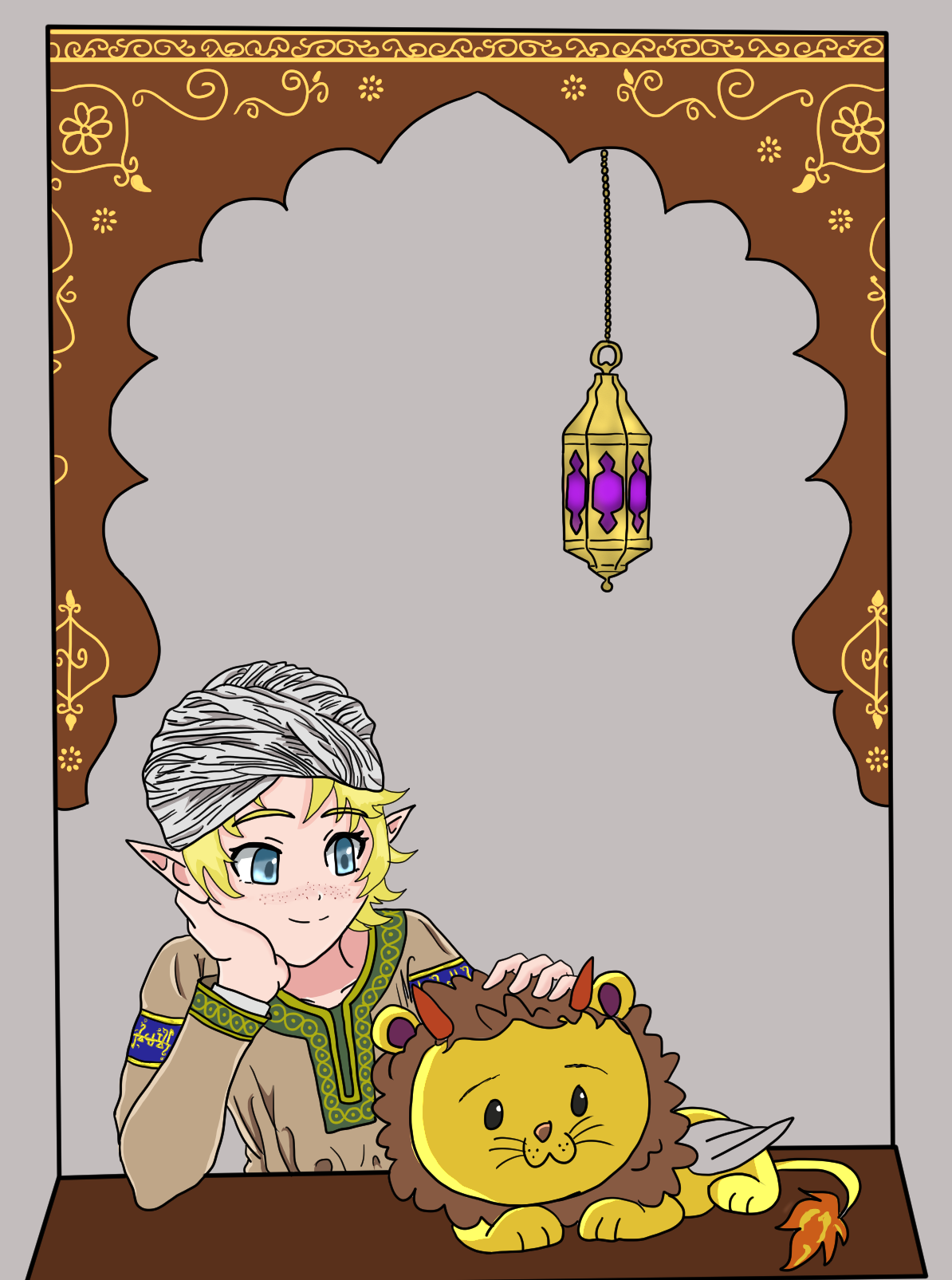Resolutions 2024
So, it's a new year! While I had some wonderful things happen last year, I'm glad to be on to this one with a chance to do bigger and better things.
World Ember went...pretty well, for me. I made it to 10k without much struggle, and was really able to really fill out a few articles. Not pushing to 25k or beyond let me focus more on making them useful and better constructed articles. Didn't quite make my secondary goal of at least one article of each type (only 5 short, not bad), but I'm happy with the ones that I wrote.
Before I Search
My aim for this particular reading challenge is to take three of the categories where I struggled a bit to fill out the articles, and see if I can't get ideas for what sort of information to look at and develop in my own work. I'll be looking at the species, material, and settlement templates. Four articles each, all chosen from the World Ember lists. The idea is that all of these articles were written within a month, so whatever's in them is achievable and not necessarily insanely polished. For each category, one will be the top liked article, one will be an article with no likes (to spread the love), and the other two are my choice.The Reading
Species
What I figured out for this category, in terms of inspiration, is to not get too bogged down in filling out all the details. Yes, get a general description down, the bare bones of what the species does. Then pick an element and explore that. Look at the unique twist of your almost-earthly creature, do your research and put down the variations from that, show how this species fits into the unique ecosystem of your world. Even focus on what you're implying, letting readers guess at what is actually going on. 1. Bronze Sloth, by Mochimanoban. A lot of fun! This article features details about the sloths' diet and the effects that certain things have, a unique twist on the usual sloth (this one doesn't belong in the same species category as other sloths), and a list of a few subspecies. It's not an enormously large article. It explains the basics of what the animal is, a few interesting specific details, and a few other types of this critter. So you don't have to go into crazy detail about every little thing about a species. 2. Secki Ducks, by ninne124. Very similar to normal ducks but with subtle differences. Doing your research on the regular old species we have here on Earth can lead to some good ideas. Art is also a nice way of enhancing an article and making the information even clearer. 3. Dragon's Breath Blossom, byGreyTailZA. Couldn't like or comment for some reason, but it was a nice little article. I wanted more links to draw into the world. The details emphasized how it fits into the ecosystem, and what it can be used for. Both details do a good job of demonstrating how this thing could fit into a story. For background details it might not be needed, but for something that would end up in a book, make sure to use the details that will be needded to understand what's going on in the book. 4. Abyssal Shells, by TailorOfFates. The initial image is rather startling, so be warned. It's cool, but it's creepy. Having something to really grab people and let them know what this is going to be about is a good thing. Also, I noted that there weren't a ton of details, and a lot of speculation within the article. It's good to leave mystery for some species. Let the reader explore, or in this case be uneasy with the lack.Materials
Materials are difficult for me because it's harder to tell a story about it. It's intended for a use, to create something else, to fit into another piece of a different puzzle. That being said, there's still plenty to talk about, as the articles below well prove. Pictures or descriptions are very important for establishing. Making it clear what kind of material quickly is also a good idea. Showing what it's valued for is a good way to tell a story. And don't forget that food is a material. 5. Prismarine, by RiverFang. First of all, this is a really cool gemstone. The description and the pictures are gorgeous. After that, there's an intriguing story of how it made it to the surface and became a hot commodity. For materials, something to consider is the story of how it rose to prominence, the people who use it, and why. This particular stone has ties to a deity, so it has meaning and weight for some characters. Sometimes a material isn't so much about what it does as what people value it for. 6. Kired, by elspeth87. The name doesn't make it obvious what this material is, so the quote establishing it as a sort of mud used for a ritual covering. A lot of names used in these settings will indicate its relation to the more familiar things (like how Prismarine above follows naming conventions for how we'd expect a gemstone). When it doesn't, you need that link immediately. Common usage is also a good way to show off a more unique material. 7. Nornflake, by cedes. For the purposes of WA templates, food counts as a material, and I continually forget that. There's a thousand different things to cook with. This particular article is quite short, but it hits the important points: what it does, possible odd effects, and negative effects/allergies. Lots of room to expand, but it's enough to write about it as it is. 8. Polgisralk Flour, by . This article is another food product. For this one, I enjoyed how the author included how the flour was produced. It's easy to think of a material as just the raw product, but for the purposes of the template it can also be the refined material. Also included a brief history of how it came to be used, which was a nice touch.Settlement
Settlements have the opposite problem from materials for me. There's too much to consider! Too many things that I want to add in. Too many places to start. These articles gave me some ideas about where to focus my thoughts, so it's not overwhelming for me to write or for eventual readers to read. Like adding in a few points of interest following a particular theme. Or focusing on the singular event that caused the founding of this place. Perhaps demonstrating some of the different sections of the settlement (then going into detail later for those more specific articles). Or showing a place more from the perspective of its inhabitants, only alluding to the negatives to draw in a reader. 9. Boria on the Delta, by Callyxtus. Fantastic eye-catching art, right off the bat. It's an old settlement, in the world it's in, and so starting right off with the history of the place was a good idea. This was a fairly detailed article, but the other point that I really appreciated and will want to bear in mind for my own articles is ending with focused points of interest. It left an avenue to continue reading, but without a ginormous overwhelming list. It focused on temples, specifically. So, add more detail to read about but not so much the reader quits. 10. Framfar, by boring. Settlements, anywhere that people settle, have sections. Sometimes it's actual layers like this city, or the invisible lines of a caste structure, but for the purposes of an article, it's a good thing to explore. Perhaps life doesn't line up so perfectly, but for writing an article, examine how things split up. In terms of the purpose of an area, or the sort of people who live in different places, or how old the pieces of a settlement are, etc. Lots of ways to explore, and leave room for more details to look into. 11. Crooked Mile, by rubyodegee. Plenty of good information about the sort of place Crooked Mile is. I liked the details about the sort of people who settled their, and their opinions about their neighbors and their own home (as well as the commentary about how accurate these opinions might be). Opinions add a personal touch to a place. I also appreciated the little histories about some of the more famous buildings in the town. 12. Lamentation's Rest, by Brinsmead. Sometimes a settlement is defined by a single event that shatters all that comes before. One for this particular place includes a burial pit that took two days to dig. Singular events can shape a place. Also interesting how history and time can reshape perception. This article focused more on the history of it, but I'm sure the way the village worked was affected as well.The Resolutions
I don't enjoy writing these. I never quite manage the ones I intend to, so it always feels like a failure even if I did manage to accomplish things anyway or if there were reasons why it wasn't feasible. But still, I acknowledge that it's important to have things to aim for. Like Hoid says, "Aim for the sun. That way if you miss, at least your arrow will fall far away, and the person it kills will likely be someone you don't know." So then, may my arrows from this year fall far, far away.- Rewrite and edit the superhero book so I can put it on a critique site so other people can read it
- Work on the series outline for the superhero series and get a first draft of book two
- Get Princess and the Pea published (or else well on its way via an agent) (I want quantifiable dates by the end of the year)
- Write some short stories as author magnets
- Start and develop a mailing list and newsletter
- Make the WA articles here into a suitable reference work for readers of the superhero books






Thank you for including my bronze sloths!! <3 I hope you have a wonderful 2024! :D